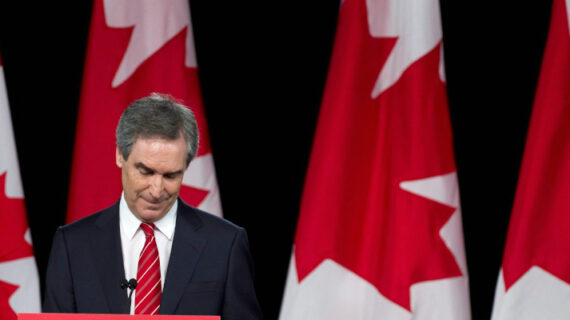An end-of-year news release caused a major economic story to go mostly unreported late last year. The federal government’s announcement of its major fiscal transfers to the provinces and territories for 2023-24 revealed that the Province of Ontario will receive an equalization payment for the eleventh time since the program’s launch in 1957 and the first time in five years.
There are extenuating circumstances at play. The interaction between high inflation and the equalization program’s design (which sees its funding envelope grow in parallel with nominal GDP growth) automatically led to an increase in the program’s overall spending and an equalization entitlement for Ontario. University of Calgary economist and regular Hub contributor Trevor Tombe has written a first-rate explainer on the policy peculiarities that produced such an outcome.
But it would be wrong to totally dismiss the news as an arithmetic aberration. Just because Ontario’s fiscal capacity exceeds the national average is hardly a sign of a dynamic and robust economy. It’s notable for instance that even before accounting for resource-based revenues, the province’s fiscal capacity lags that of Alberta and British Columbia.
This trend towards a middling economy didn’t happen overnight. As co-authors and I outlined in a 2020 policy paper, Ontario’s rate of economic growth has been in secular decline for decades. Over this entire century, its annual average growth is barely 2 percent.
Slow growth isn’t without consequence. It’s become a cumulative drag on Ontarians’ living standards including relative to its U.S. neighbours. The province’s GDP per capita (which is a good barometer of its standard of living) exceeded that of its neighbouring states like Michigan, Ohio, and Pennsylvania when I was born 40 years ago. Today Ontarians are poorer than their American peers from Warroad, Minnesota to Buffalo, New York.
There’s a case that Ontario has in effect become the “sick man” of North America. And there’s reason to think it’s actually bound to get sicker.
RBC Economics projects that Ontario’s real GDP growth will be the worst among the provinces in 2023 and second worst in 2024. In fact, RBC anticipates that Ontario’s economy is the only one across the country that will actually contract over the coming 12 months.
One would think that such a distinction would jolt Ontario policymakers into a pro-growth policy agenda. The province’s economy needs “shock therapy.” But it probably wouldn’t get it.
The Ford government first came to office in 2018 with bold promises of an “open-for-business” agenda that has never quite materialized. That doesn’t mean there haven’t been any positive policy developments. Examples include: early regulatory reforms; tax reductions (including accelerated depreciation on capital investment as well as lowering business property taxes, and employer health taxes); significant investments in public infrastructure; some interesting developments on intellectual property; and Labour Minister Monte McNaughton’s ambitious agenda in the labour, skills training, and immigration portfolio.
But it’s fair to say that in overall terms the government’s record is underwhelming. Its early ambitions have mostly narrowed to an odd mix of populist economics, left-wing accommodation on COVID-19, education, and public spending, and a tendency to find itself in political controversy without the accompanying conservative reforms to show for it.
The province now finds itself at a crossroads. It’s stuck in a slow-growth cycle of sclerosis and stagnation. It’s no longer enough for the government to focus on frivolous issues. It needs to recommit itself to growth.

The good news is that Queen’s Park already has something of a blueprint for a renewed focus on a pro-growth agenda. It just has to deliver on its own outstanding policy commitment to develop, implement, and monitor a long-term growth agenda for the province. As the 2021 provincial budget set out (italics added):
The government will take further steps to create a more competitive environment for job creators through a plan for long‐term economic growth, informed by business leaders and entrepreneurs, workers and labour representatives, community organizations, experts and most importantly, the people of Ontario. Ontario will outline a long‐term growth plan that:
- articulates a clear vision for attaining higher rates of economic and productivity growth that will ultimately lead to a more prosperous provincial economy for all the people of Ontario;
- undertakes an in‐depth analysis of the province’s competitive strengths and challenges;
- provides goals to work towards over a five to 10‐year timeframe; and
- identifies initiatives that will achieve those goals.
Research tells us that such a clear, coherent, and transparent long-term growth strategy can tilt policymaking in a more pro-growth direction and mitigate some of the political economy pressures towards short-termism and special-interest policymaking. It can anchor the government’s policy agenda and enable greater alignment across ministries and policy areas.
Bringing expression to long-term growth ought to be the top priority in the lead-up to this year’s provincial budget. It’s hard to overstate how important it is that the Ford government reorients its attention to economic growth. A sustained period of economic underperformance will shift this year’s formulaic dip into equalization-receiving status into a new norm. Ontario is at risk of permanently becoming a “have-not” province.
The province’s only path back to economic health is through higher rates of productivity. There’s no other way around it. That means reckoning with its unhealthy dependence on the real estate sector, its wrong-headed emphasis on GDP growth in and of itself than rather than rising GDP per capita, and its geographical concentration of economic activity. It means in short getting back to broad-based growth.
The Ford government’s forthcoming budget therefore is a crucial moment for the province’s economic future and its own policymaking legacy. Will we get a long-term growth strategy or a smattering of “business-as-usual” policies? One should hope for the former but anticipate the latter.




